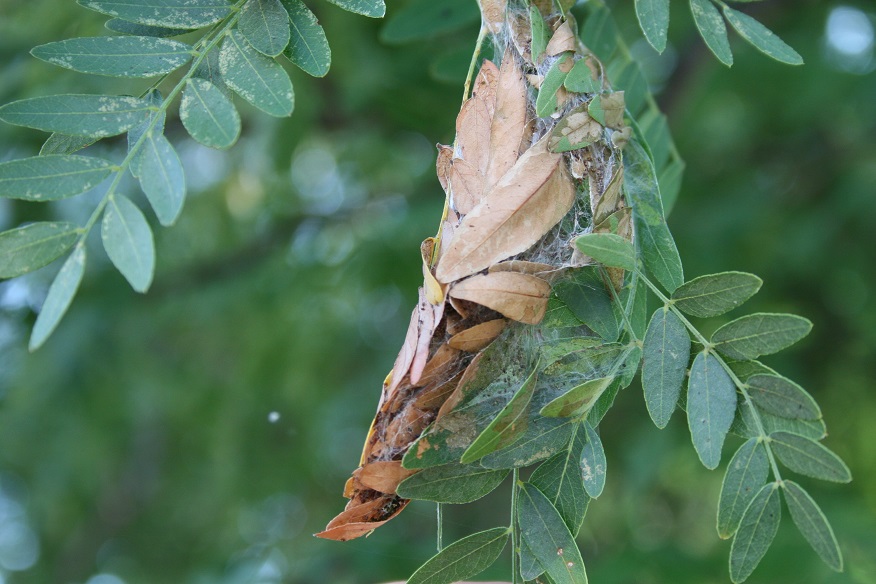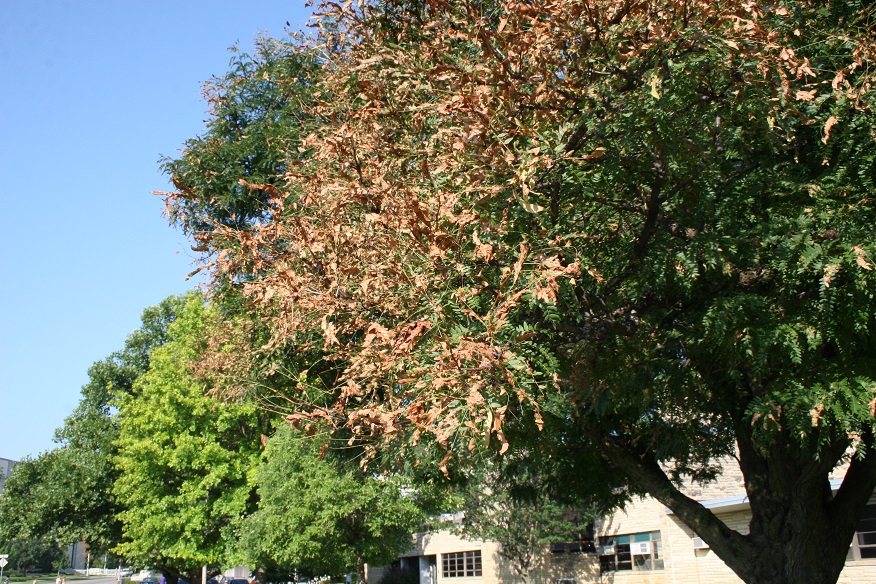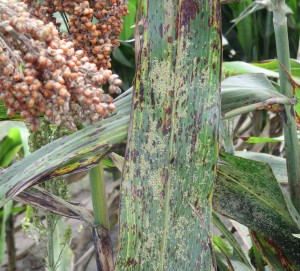— by Dr. Raymond Cloyd
Now is the time of year when mimosa webworm (Homadaula anisocentra) larvae (=caterpillars) are feeding and creating their protective habitat on honeylocust (Gleditsia triacanthos) and mimosa (Albizia julibrissin) trees. The larvae (=caterpillars) are 1/2 inch in length when fully-grown, and rapidly move backward when disturbed (Figure 1).
Fig 1. Mimosa Webworm Caterpillars Feeding On Leaves (Raymond Cloyd)
The caterpillar webs leaves together on the ends of branches (Figure 2).
Fig 2. Mimosa Webworm Webbing on Branch End (Raymond Cloyd)
Webbing typically starts at the tops of trees and serves to protect caterpillars from natural enemies (parasitoids and predators) and insecticide spray applications. Heavily-infested trees are brown or scorched in appearance (Figure 3) as the caterpillars skeletonize the leaf tissue. Caterpillars eventually fall from trees on a silken strand before pupating. Mimosa webworm pupates in bark crevices or pupae will be glued to structures (e.g. building). In regards to controlling mimosa webworm infestations, it may be too late although initial damage may be minimal. Insecticides that may be used to suppress mimosa webworm populations, in which the caterpillars are exposed, include: acephate (Orthene), Bacillus thuringiensis subsp. kurstaki (Dipel), spinosad (Conserve), carbaryl (Sevin), and several pyrethroid-based insecticides (e.g. bifenthrin and cyfluthrin). Read the label of each product to ensure that “webworms” are listed on the label. High-volume spray applications are essential in order to contact the caterpillars inside the protective webbing. If trees are already heavily-infested with webbing then it may be too late to apply an insecticide. If possible, selective pruning can quickly remove isolated or localized infestations of mimosa webworm.
Fig 3. Mimosa Webworm Feeding Damage (Raymond Cloyd)



